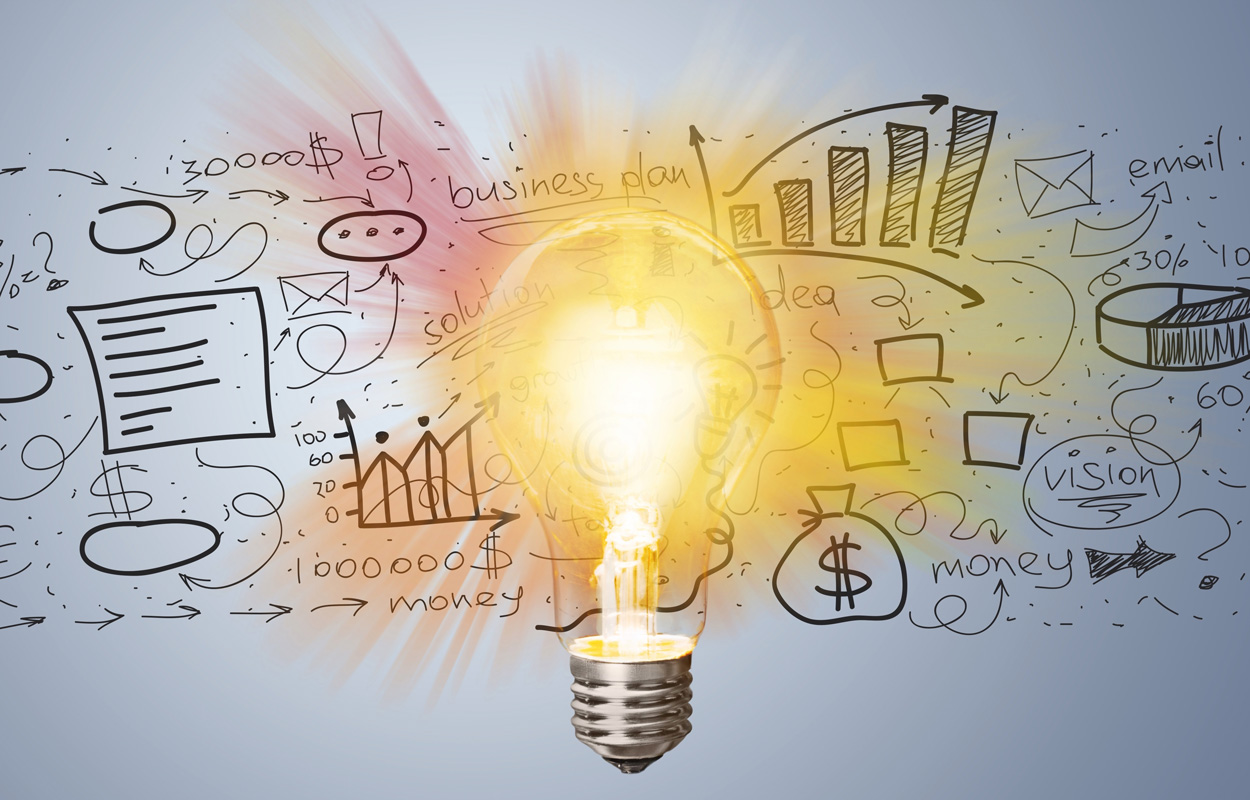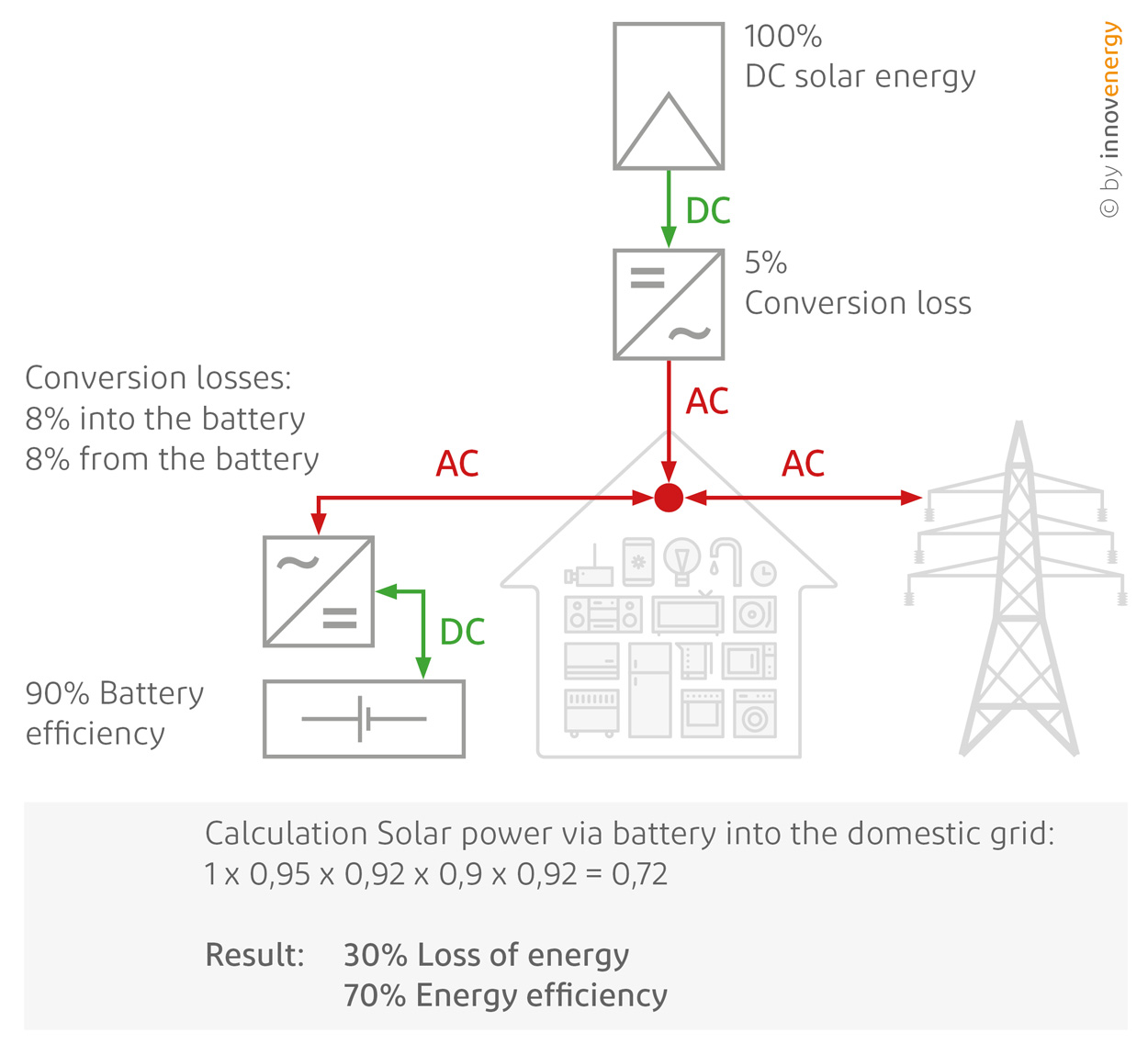Storing costs electricity: The issue of conversion losses
Renewable energy systems, such as your photovoltaic system, produce direct current (DC). The storage battery in your basement also needs direct current. Your computer, your TV, your e-vehicle, LED lamps or electric motors of machines all work with direct current. But the electricity grid in your house or flat uses alternating current (AC) – even the public grid. And everywhere there are converters or inverters that bring voltages and current to the same level. Unfortunately, there are always losses in the process.
It's as if our appliances speak different languages: English, German, Spanish or Italian. Some languages are similar, others are completely different. What they all have in common is that they need a translator: a voltage converter or an inverter. But what are the consequences?
Fundamental discussion
Well, actually we don't really want to have this discussion, but we would like to raise a fundamental question that has its origins in the history of electricity. In a battle for market share between Edison (DC) and Westinghouse (AC) at the end of the 19th century, alternating current prevailed in our electricity systems because of its better range. With renewable energies becoming more and more decentralised today, it could make sense in the future to also convert our households with all their appliances to direct current. That would be a big step towards energy efficiency, but also a big step towards system-wide change.
Conversion needs energy
Whether you want to convert from direct current to alternating current or from a high voltage to a lower voltage, every conversion involves losses. As a rule, these are heat losses in which energy is lost. You can always feel this on a power supply unit (e.g. your laptop), because power supplies in operation are always a little warm. Since these conversions take place everywhere in our households, a lot of tiny amounts of electricity are often wasted.
If you google "energy loss household", you will almost exclusively come across pages that help you save energy when heating. It is true that this is where the greatest losses occur and this topic also contains the greatest savings potential. But one finds little about the fact that a household constantly wastes electricity by converting energy in the end devices.
Whether it's the LED bedside lamp or your television – depending on the end device, power supply units or rectifiers are connected between the socket and the device. Most of the time, they are already built into the appliance. Because with every device, you have to bring everything down to the right denominator, speak the right language, or convert it to the right current, bring it to the right voltage. Everywhere, this creates noisy little losses. This also applies to the conversion processes from photovoltaic system to battery storage.
Ways to battery storage
There are various ways to transfer the electricity from a photovoltaic system to the battery storage system. There are AC-coupled and DC-coupled systems.
AC-coupled systems
In an AC-coupled system, such as our salidomo©, the DC energy from the photovoltaic system is converted into alternating current via an inverter and fed into the household grid. This is where the first conversion losses occur. Only when all consumers have been served do the AC surpluses go into the battery. But here, direct current is needed again. So the AC current is converted into DC current via a battery inverter, which also generates losses again, and can then finally be stored in the battery. The advantage of AC-coupled systems is that it doesn't matter what is installed before the battery inverter. The battery storage system thus fits into any existing system.
DC-coupled systems
DC-coupled means that the direct current from the photovoltaic system is stored directly in the DC battery and does not first have to be converted into alternating current and back again. But it is not quite that simple, because the high voltages from a photovoltaic system have to be converted into the lower voltage of the battery storage via a DC/DC converter. So losses occur in this system as well. A DC-coupled system must be very precisely coordinated. In this case, a battery storage system cannot be retrofitted without further ado. In addition, a household is then operated via the battery. So conversion losses to alternating current occur again.
Pure DC-coupled systems make sense for distributed photovoltaics on different roofs, for distributed storage units or distributed consumers that are all connected with the so-called DC link. ZEVs, neighbourhoods or areas are particularly suitable for DC-coupled systems. Basic explanations can be found on our pages DC Technology and DCmaxx© | Grid Solutions.
Storing costs electricity
No matter how you look at it, storing energy in a battery costs electricity! Usually it is own electricity from the photovoltaic system that is lost through one conversion or another. For a normal AC-coupled system, we have roughly calculated this and come up with an energy efficiency of approx. 70%. So the energy losses are about 30%. What we have not calculated, and cannot, are the losses within the AC household grid due to the small conversion losses at the end devices. These vary greatly from household to household.


